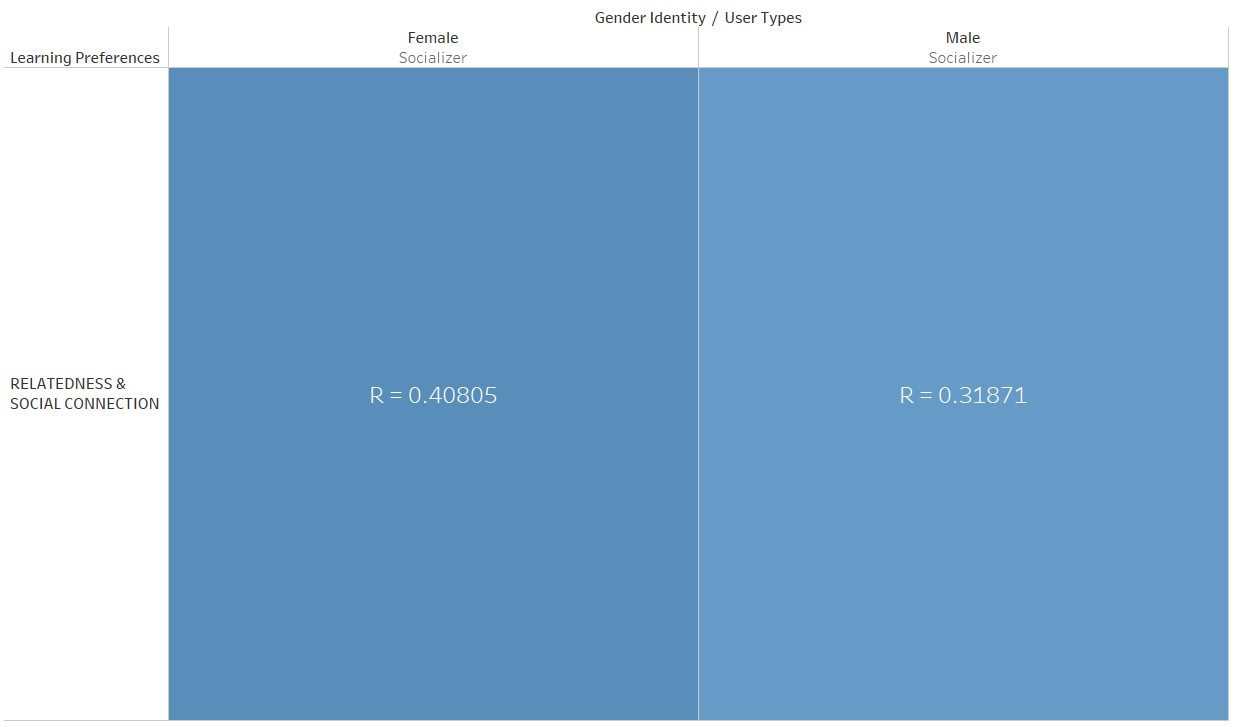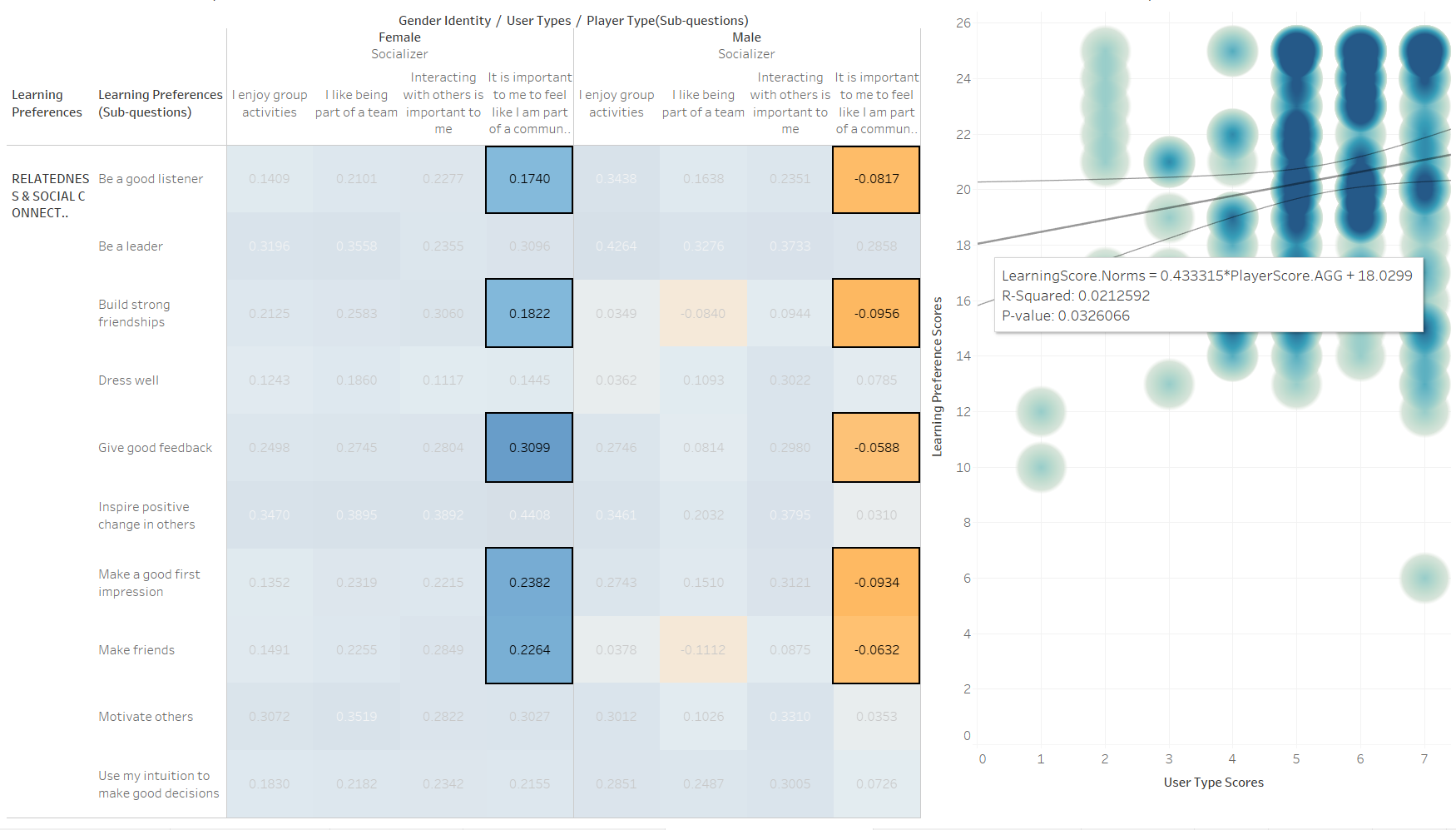Overview
This project came about after statistics consulting (part of SFU Big Data) reached out to us to see if we could enrich their existing analysis. The client, Dov Shafer, is a PhD candidate studying gamification for educational purposes. A major challenge for educators is motivation of students. Gamification, which is commonly applied to support intrinsic motivation on a given task, shows promise in motivating students when applied to the design of coursework. Not all gamers are motivated in the same way and so researchers have created a "Player and User Type Hexad" using a standardized survey protocol in order to predict user gameplay motivations. Dov Shafer conducted a survey of SFU students from a variety of disciplines and is using the resulting data to explore relationship between this gaming player typology and student's learning preferences to determine if this typology is a useful framework for the design of educational games.
Impact
Our engagement and use of visual analytics has provided Dov with entirely new ways of asking questions of the data that were not obvious in existing research. Through the use of our tools Dov was able to identify weaknesses in existing methodologies and identify patterns in the data that would otherwise have been missed. Our tools allowed Dov to spot critical issues with data and analytic steps the needed to be corrected. Dov's engagement with Big Data consulting began with statistics, but given the small sample size and high dimensionality of his survey data, visualization has provided him with a valuable analysis to tool to shine a light on valuable future research and to refine methodological approaches in his domain of study.
Unpacking the Story Behind the Aggregation

This project began with assessing correlations between two typologies for gaming user types and learning preferences. These typologies are derived from aggregated scores from a number of underlying survey questions. Above is a correlation heatmap showing R values between each if the typologies. When we expanded to measure correlations between individual sub-questions that these typologies are constructed from, some very nuanced patterns emerged (see image below).

Even expected relationships such those between "socializer" user types and "Relatedness and Social Connection" learning preferences revealed nuanced patterns when broken down by attributes in the data. When broken down by gender, males had a slightly weaker relationship.

The overall relationship is positive, however, indicating that socializers should be interested in games that teach people more about social connection. But this is not the full story. Drilling down into the individual learning preferences questions revealed some interesting differences between genders.

All female correlations were moderate except "inspire positive change in others" which was slightly stronger. Meanwhile, Male correlations were much weaker withsome even being negative. Males who were high scoring socializers were strongly correlated with wanting to learn more about "being a leader". Females had considerably stronger correlations with "build stronger friendships" and "make friends" than males. This inspired deeper inquiry into the component questions of the "socializer" user type.

When broken down in this way, it is visible that all female questions are positively correlatated, but this is not the case for males. The user type sub-question "It is important for me to feel like a part of a community" in combination with all learning preference questions that deal with social connections (highlighted below) scatters the range of answers and reduces the significance of the correlation below acceptance levels. (The visualization on the right is a density scatterplot which encodes overplotted points as darker colors to indicate how dense the data is at that coordinate).

This demonstrates how aggregates such as those used in typologies derived from survey questions can be influenced by nuanced relationships and interactions in their component questions. Here gender differences ended up working in opposing ways that weakened the strength and significance of the aggregated correlations.
